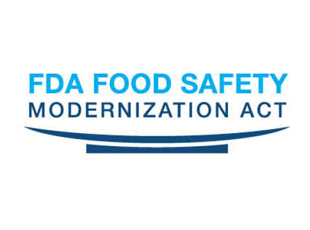Comment now on proposed changes to food safety rules
People interested in food safety have until Nov. 15 to comment on the FSMA proposed changes to food safety rules released by the Food and Drug Administration.
 The proposed changes to food safety rules will change farmers’ lives and they will be dealing with them forever, so it’s important to comment, said Atina Diffley of Farmington, Minn., a former organic farmer turned consultant who teaches food service and post-harvest handling to farmers.
The proposed changes to food safety rules will change farmers’ lives and they will be dealing with them forever, so it’s important to comment, said Atina Diffley of Farmington, Minn., a former organic farmer turned consultant who teaches food service and post-harvest handling to farmers.
She encourages farmers to be as specific as possible in their comments and address specific parts of the rule. Bring in science, Diffley said. Some of the things that are most problematic in the proposed rules aren’t based upon science. Congress, in updating the legislation in 2010, was clear in that the rules must be based on science, she said.
An example is a proposed rule related to manure application. The proposal says manure must be applied nine months before crop harvest. This makes it all but impossible to apply manure during the normal growing season on Midwest farms. Also, it’s in conflict with USDA organic standards, which allow raw manure to be used for fertilizer as long as it’s applied at least four months before harvest.
No research exists to show that nine months is realistic, Diffley said. Research needs to be done before asking farmers not to use manure. If outlawed, valuable manure will end up as a waste product.
The proposed rules were discussed during Sen. Al Franken’s recent visit to Callister Farm of West Concord, Minn. Lori Callister said the rules don’t do enough to distinguish between Del Monte and farmers markets or Cargill and Callister Farm.
The proposed rules give FDA broad authority to shut down farmers who sell produce direct to consumers. As written, the rules say the FDA can shut farms down with no reason and farmers have no recourse, Callister said.
“There’s a lot of fear out here,” she said.
There was an exemption for farms with less than $500,000 gross sales, but that includes a farm’s entire income, not just income from the produce operation, said Adam Warthesen, policy program organizer with the Land Stewardship Project. LSP members are OK with that amount as long as it relates only to the income from the produce operation, not the income generated from others sources.
Another issue is the lack of clarity regarding processing facilities, Diffley said. It’s not clear in the proposed rules if a Community Supported Agriculture is considered a processing facility.
“There’s no reason a CSA should be considered a facility just because they put more than one vegetable in a box,” she said.
Ariane Lotti, assistant policy director at the National Sustainable Agriculture Coalition, said the rules as written could have a chilling effect on the growing local food movement.
The intent of Congress in the Food Safety Modernization Act was not to put forth a one-size-fits-all approach, Lotti said. However, a number of the Food and Drug Adminstration’s proposed rules aren’t consistent with this approach.
“I think they haven’t followed the intent because this is the first time the agency is regulating the farming system,” Lotti said.
It’s clear the agency is unfamiliar with the broad diversity of farming systems and its supply chains, she said. The National Sustainable Agriculture Coalition is encouraging farmers and consumers to comment and to use their comments to inform the agency about what they do . . . to create a picture of what agriculture looks like.
There are also lots of questions of how the states will implement these regulations, Lotti said.
Diffley said farmers shouldn’t fear the regulations, instead now is their time to have an impact.
“We don’t want people to quit farming over this,” she said. “They’re going to have to update some of their practices, but they (the rules) need to be reasonable and they need to be realistic.”
Some of the things in the proposed rule are very good, Diffley said, citing traceability and clear guidance on safe-handling practices for fresh produce. The proposed rule requires traceability one step forward and one step back.
Both Diffley and Lotti expect the final rule to be put out sometime in summer 2014. Farmers will then have two years to four years to come into compliance, with the timeframe dependent upon sales volume.
“It’s now or forever hold your tongue,” Diffley said.
Source: postbulletin.com


